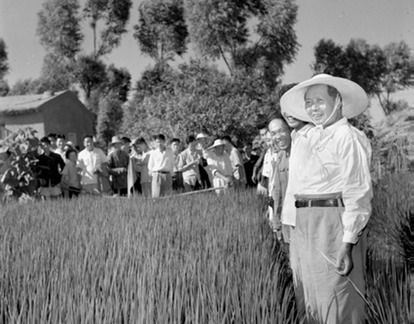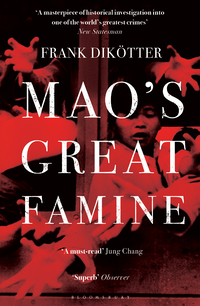The Great Intellectual Famine
In 1965, the venerable New York publisher Random House released Report from a Chinese Village, a plodding exercise in Maoist stenography from Swedish writer Jan Myrdal, son of Nobel Prize–winning sociologists Gunnar and Alva Myrdal. Chronicling the author’s 1962 visit to rural China, the book claimed that, under the benevolent leadership of Chairman Mao, a once-backward country was now speeding toward a glorious socialist future. By the mid- 1960s, the Soviet Union had disappointed all but the most slavish party members and fellow travelers, but the People’s Republic of China, having just completed its “Great Leap Forward” in agricultural and industrial production, would serve as the new hope.
After the revelations of Khrushchev’s 1956 secret speech detailing Stalinist crimes—and confirming what most clear-eyed observers long understood—it is astonishing that so many intellectuals and journalists would again surrender to the delusions of Communism. The New York Times hoped that Report from a Chinese Village would “be widely read.” Another Times writer—it was reviewed twice—deemed it an “important” contribution to the study of Mao’s revolution because Myrdal “demonstrates clearly the amount of change which can be effected in a peasant village” through collectivization. In 1976, long after the genocidal enormity of Maoism could be plausibly denied, the Times tagged Report from a Chinese Village a “valuable and moving” book. But by the late 1970s, even Myrdal had slinked away from China, having transitioned to writing paeans to Stalinist Albania and Pol Pot’s Cambodia.
It wasn’t just academic sympathizers and journalists who testified to the promise of Maoism. Future French president François Mitterrand, assured by China’s Communist leadership that reports of famine were crude examples of imperialist propaganda, endorsed the Great Leap Forward and, upon returning
to Paris, declared Mao to be “a humanist.” Field Marshal Bernard Montgomery, the famous commander of British forces during the Second World War, visited China twice during the famine (“no large-scale famine, just shortages in certain areas”) and argued that the country “needs the Chairman.” In 1959, citing the supposed improvement achieved under the Great Leap Forward, then- Senator John F. Kennedy, warming up for his presidential campaign, warned of an emerging economic gap in the Third World, fretting that “Communist China offers a potential model” to poor countries after it posted impressive (and wholly invented) growth numbers.
But by 1959, as Frank Dikötter meticulously documents in Mao’s Great Famine: The History of China’s Most Devastating Catastrophe, 1958-1962, China was already prosecuting perhaps the “most deadly mass killings in human history.” Dikötter, a historian at the University of Hong Kong, acknowledges readily that the book’s subtitle is misleading; to speak of “famine” implies that the dead were victims of poorly executed agricultural policy. The mass killings of the Great Leap Forward were very much man-made, consequences of the “coercion, terror, and systematic violence” inherent in Maoism.
In the four years of the Great Leap Forward, a period in which Mao boasted that China would outperform the United Kingdom, Dikötter calculates that at least 45 million Chinese perished, though he suspects that the real figure exceeds 50 million. According to internal party documents reviewed by Dikötter— he was allowed to use regional and local party archives but prevented from accessing material in the central party archive in Beijing—the Chinese government estimated that, in the Sichuan province alone, the Great Leap Forward resulted in a staggering 8 million “excess deaths.”
The 1960 death toll for the Xinyang region was over a million. “Of these victims,” Dikötter found, “67,000 were clubbed to death with sticks.”
If the scale of violence and death is incomprehensible, the archival material mined by Dikötter humanizes the 50 million victims. Documents detail countless horrors: children beaten by party cadres and bamboo inserted under fingernails for “stealing” a handful of rice; starving families attempting to quell hunger pangs by eating mud (which would temporarily assuage hunger but hasten death); a father forced to bury his son alive for stealing a small amount of grain; pregnant women who missed work forced, in the dead of winter, to disrobe and break ice; people resorting to cannibalism. The public humiliations
and the brutal violence that would be the trademark of the Cultural Revolution, Dikötter demonstrates, were perfected during the Great Leap Forward.
Farmers responded with incredulity when party leaders demanded they “close crop”—sow seeds closer together because, as Mao claimed, “with company they grow easily, when they grow together they will be comfortable”—but said nothing for fear of being denounced as “rightists.” In terrifying detail, Dikötter elucidates the cult-like world of Maoism and the sycophancy of the Chairman’s inner circle, where party lackeys sputtered that “the thoughts of Chairman Mao are always correct” even as crops failed and emaciated corpses were piled into mass graves.

